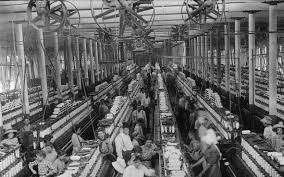Declining yarn exports has put the Indian textile industry in a crisis mode.
Is this crisis a short or long term? A telephone conversation with two Indian textile industry professionals painted a clear picture.
Indian textile industry is strong in the spinning sector, which has been heavily dependent on exports. “Yarn market is dull,” stated Mr. Subbiah Krishnamoorthy, general manager of Vaibhav Ginning and Spinning Mills, Pvt. Ltd., a spinning mill with 26,000 spindles located in a cotton growing area in Gujarat, India. China and Bangladesh are not buying yarns and the prices are low, added Krishnamoorthy.
“China is the major market for Indian yarns and the trade war between the United States and China has affected the Chinese textile sector,” stated Mr. Krishnasamy Gandhiraj, general manager with Lakshmi Card Clothing Company, who has been in the textile industry for over four decades. Indian textile sector has been heavily spinning based and this is the problem added Gandhiraj.
While touring the cotton producing regions in Gujarat state, which is the number one cotton producing state in India, Gandhiraj stated, “This year’s crop will be of good quality due to rains. Yield will be high and due to good quality, yarn realization will also be high.” “Ginning will begin soon after Diwali, the prominent festival in India and harvest in some areas in Gujarat will be in 20-25 days,” stated Krishnamoorthy. His mill normally supplies to export (50%) and domestic (50%) markets, and is feeling the pinch in export shipments. The state of Gujarat has ramped up its spinning capacity since 2012, due to the state’s supportive schemes such as power and interest subsidies. Currently, the state has about 3.5 million ring spindles and has proximity to cotton—a positive aspect.
The upstream sector such as garmenting and finishing do not have the necessary capacity to cater to big markets. There is still demand for value-added products to markets like the United States, which cannot be currently handled by the Indian textile sector—Gandhiraj opined. Structural shift is needed to focus on building value-added sectors such as garments and technical textiles.
Given the slump in the textile sector, will there be confidence in building other sectors in the textile industry? For long-term viability, the goal should be to diversify and build the upstream sectors. Here again, Indian industry should enhance its product offerings. Recently, Aruppukottai-based textile industry has worked with this scribe and Chennai-based WellGro United, and has developed a value-added product, “Towelie TM,” which has attracted export markets catering to oil and gas sectors.
Diversification, working with marketing channels and looking for opportunities beyond traditional markets are needed. Probably, it is time to start planning towards attaining these goals. This should be the strategy moving forward!

